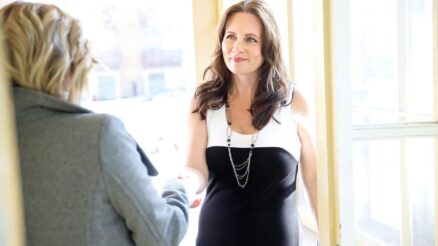A recent research conducted by the Yale School of Management predicts that by 2027, 75% of successful US business organisations will lose their position to presently unknown entities. Reason? Business organisations gradually stick to old ways of doing business and they become more bureaucratic.
All they need is to be more creative to succeed in a time of ever-changing technology. Organizations with a culture of creative thinking at their workplaces make them adaptable to transition and change.
In the same way, employees from workers to executives they prefer to follow old working methods. But what is more worrisome is that most of them have a mistaken viewpoint about being creative.
Being more creative at workplace demands change in our thinking patterns. We need to get rid of rigid attitude toward creativity and adopt fresh perspective of thinking outside the box. And this idea is beautifully explained in a recently published book “The Creative Thinking Handbook” by Chris Griffiths and Melina Costi.
Following are some dos and don’ts of being creative at workplace.
Get Yourself Free from Selective, Reactive and Assumptive Thinking
Selective Thinking makes us prefer some ideas over others and we turn a blind eye to other perspective. Hence, we become rigidly selective. Instead of analysing different options we tend to stick to our safest bets. Due to being selective thinking, we shut the door on possible new opportunity.
Reactive Thinking makes us rush to accept an idea quickly and execute it before someone else try it. This thinking makes us feel that we are in a race and we just need to beat everyone. And people often make mistakes when they push themselves and others to act like this.
Assumptive Thinking leads us to make decisions on the knowledge or past experience. This also restricts us from seeking new options and trying other ways. Therefore, we stop being creative.
We need to shift our thinking pattern and have a mind-set of accepting everything as possible. We need to challenge assumptions and our way of seeing things. AsChris Griffiths explains in this inspiring TED Talk
Make a Habit of Being Creative
Almost 40 % of our daily actions are habits. We start our daily morning routines without making decisions. We do these routines automatically. Our brain works like this. It knows our thinking patterns and starts thinking in a specific way when a specific situation arrives.
Since majority of us do not have a habit of creativity; so when we encounter a new problem, our brain automatically provides us with old and already tested solutions.
We can change this by allowing our brain processing new information and accepting new ways of doing things. In this way we can develop habit of being creative. Once it becomes habit, our brain will automatically find new creative ideas.
Creativity is a skill not a talent
This is another mistaken belief that some people are born creative. They have this talent as a natural gift. This is again not a true and actually creativity is a skill. Like other skills, we can develop this skill, improve it by practising it and refine it with experience.
Creativity is not limited to arts, entertainment but it is a skill which you need in every profession and at every workplace. And now organizations are looking for this skills more than ever.
In 2016 Future of Jobs report, the world Economic Forum listed creativity, critical thinking and problem solving as the three most important skills to succeed in the 2020 workplace.
Know your Challenge
Many a times we jump to solutions without understanding our problem. Superficial knowledge of problem or challenge leads to poor solutions. A deep knowledge of problem or challenge is key to thinking creative solutions.
First you need to define your challenge and also list down what you know about it and what you don’t. It is also important to have clarity on what is possible outcome.
The executives at Toyota have a unique habit since long time. Before they jump to solutions they ask why question five times. By doing so they are able to know their challenge inside out which make it easy for them to find creative solutions.
Borrow perspective
You must seek insights from others before you reach to answer your challenge. Consult your colleagues, friends and people from other fields. You can imagine what world’s legendary leaders and thinkers would have responded in this situation.
It is always better to get perspectives of people from different backgrounds. It opens your mind to unique ideas and innovative solutions.
Collective and Individual Brainstorming
Brainstorming at workplace is essential for creativity. For this purpose, teams should organize collective brainstorming meetings. Before meetings, team members should be asked to do their homework individually. By organizing like this, it is likely that team will produce more creative solutions.
A research by the State University of New York found that teams that were given guidelines for brainstorming produced three times as many good ideas as the teams that were not.
Another effective method is to manage these brainstorming meetings is to have these meetings out of the workplace.
Write Down your Ideas and Plans
Writing down your ideas boosts your creative power. Written ideas do have possibility of developing further and they improve with more work on these. Therefore, the habit of writing down your ideas increases chances of its success.
Dominican University in California conducted a research on this. They asked 149 participants to either write down their ideas and plans or only make mental notes. After years they found that 76 per cent who wrote down their ideas actually achieved them and only 43 percent could achieve their goals who just thought in their minds.
Supportive Atmosphere at Workplace
A supportive atmosphere at workplace stimulates employees’ creativity. There are four factors which need to take care of.
First, is sound because noise creates huge distraction. Ideally, there should be a private space for each employee to work with uninterrupted focus. Separate space for brainstorm meetings are also necessary at work place.
Second, a good colour scheme produces stimulating vibes. Some of research studies found that indoor plants have a positive and refreshing effect on minds of employees.
Third, temperature has an impact on employees thinking abilities. It is always better to maintain a comfortable temperature so that employees can able to think better and produce creativity.
Fourth, a good bright light is also key to better working atmosphere. Creativity needs workplaces with bright and more natural light.
Take Home Points
- We should make a conscious effort to get rid of selective, reactive and assumptive thinking patterns which block our creativity.
- Install a habit of being creative when face a challenge at workplace.
- Creativity is a skill which can be improved by practising it.
- Having better understanding of our challenge increases chances of coming up with more creative solutions.
- Taking stock of others opinions enhance our ability of being creative at work.
- As a leader, we should encourage both collective and individual brainstorming.
- Writing down ideas and plans has a strong connection with making them successful.
- A comfortable atmosphere at workplace also fosters creativity of employees.



